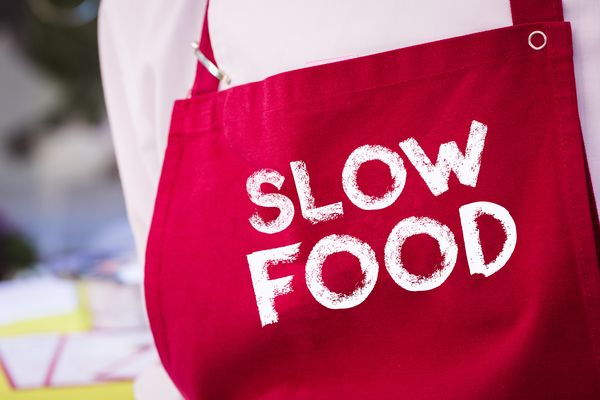
Modern food trends are springing up like mushrooms. Again and again new diets establish themselves or change and find sometimes more sometimes less “followers”. In two of our blog posts on modern food trends, we go into the Convenience Food and the
Fast Food
in more detail. Today we turn our attention to a counter-movement: slow food.
The Slow Food movement represents a counterpart to fast food. Whereas fast food is food that is quickly available and usually of lower quality, slow food stands not only – as the name suggests – for slow food, but above all for enjoyable, conscious and regional food.
The movement was founded in Italy in 1986 and today has about 100,000 members worldwide.
The organization describes its philosophy as follows: „Slow Food is committed worldwide to a culture of food based on appreciation, responsibility and enjoyment. In our network, people work with conviction and passion for a sustainable food system. Preserving the bio-cultural and taste diversity and giving our food the value it deserves as a “means to life” are basic prerequisites for this.“[1]
Slow Food founder and international chairman Carlo Petrini chose three basic concepts on which to base the movement’s food choices: good, clean and fair(buono, pulito e giusto). Accordingly, only tasty, fresh, wholesome food should be eaten, which has not harmed humans, nature or animals in its production, trade or consumption, nor caused social injustice.
Finally, it should be mentioned here that the logo of the Slow Food movement is a snail, which stands for slowness. Beautiful, isn’t it?
In the sense of regionality and wholesomeness, we have here another great
Apricot dumpling recipe
for you >>
See you soon,
the team of the Salzburg grain mills
https://www.slowfood.de/wirueberuns/unsere-philosophie
https://de.wikipedia.org/wiki/Slow_Food
[1] https://www.slowfood.de/wirueberuns/unsere-philosophie (accessed August 3, 2021)
Address:
Gasteigweg 25,
5400 Hallein
Austria
Opening hours:
Monday to Thursday: 09 – 16:00
Friday: 09 – 12:00
Contact:
Phone: +43 6245 83282
E-mail: info@agrisan.at
Address:
Gasteigweg 25,
5400 Hallein
Austria
Opening hours:
Monday to Thursday: 09 – 16:00
Friday: 09 – 12:00
Contact:
Phone: +43 6245 83282
E-mail: info@agrisan.at

